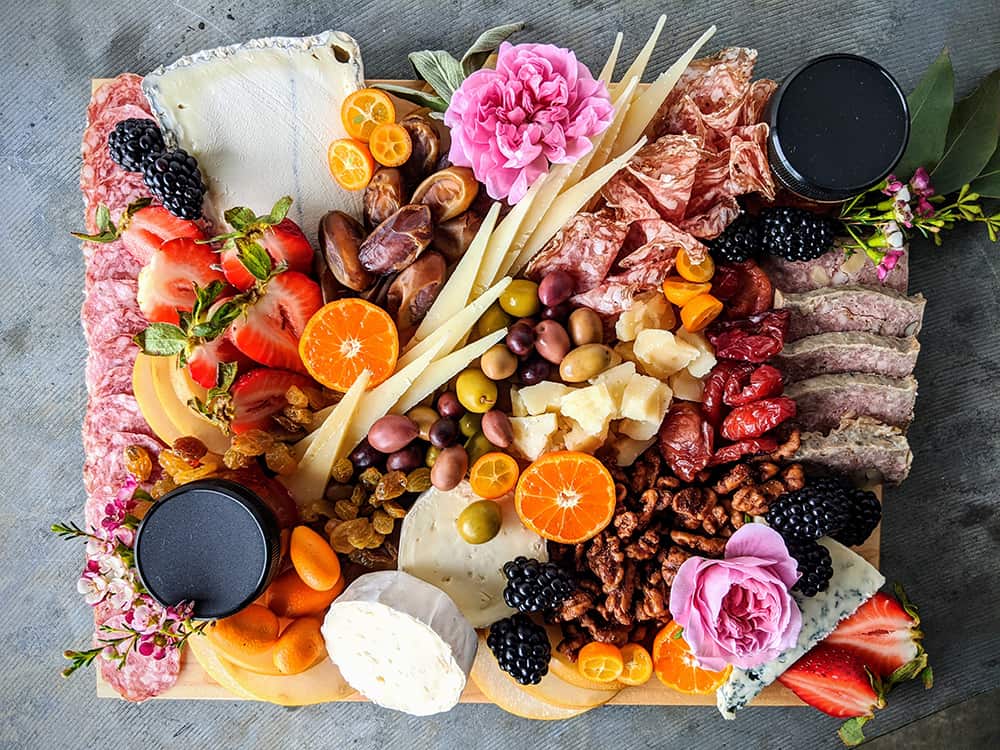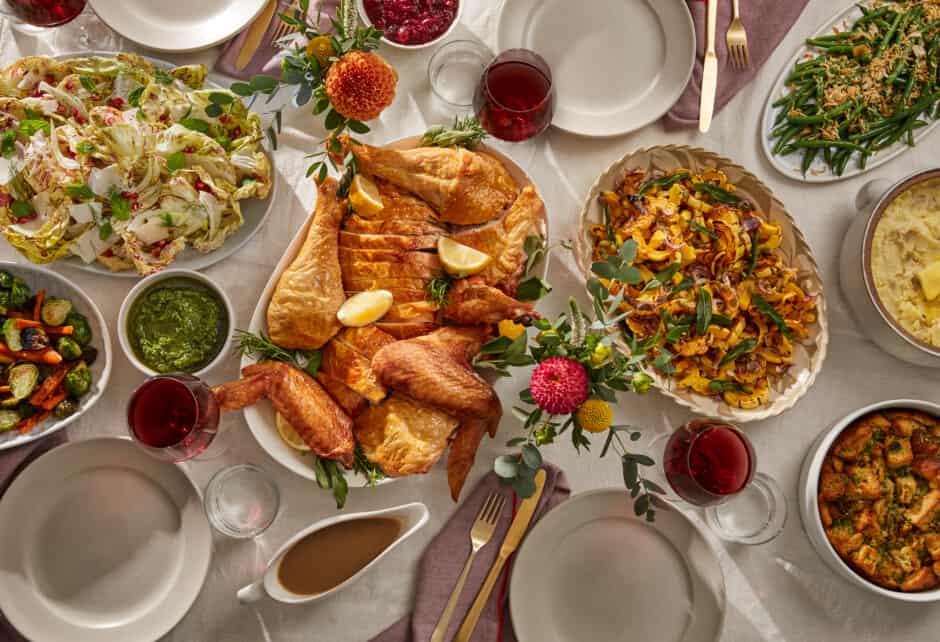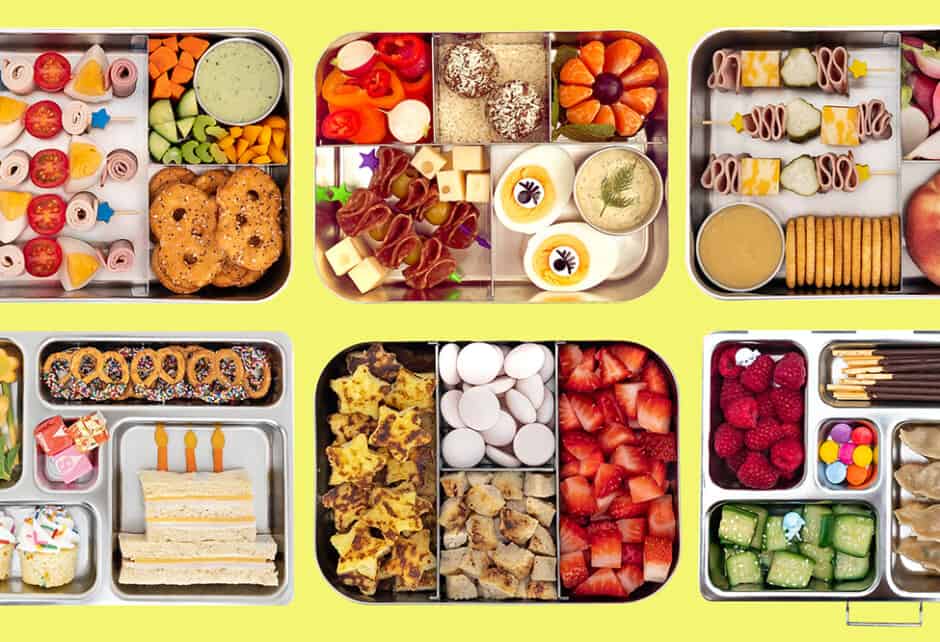
How To Make A Cheese Board That’s (Almost) Too Pretty To Eat
Written by Katie Hintz-Zambrano
Photography by Photo Courtesy of Ripen Company
If you’re ready to take a break from heavy-duty cooking, we suggest subbing out one of your meals with a hearty gathering board. New to board-making or just want to upgrade your current skills? No problem. To help you create a board that’s as tasty as it is beautiful, we’ve asked Sophie Speer, the founder of San Francisco-based Ripen Company—known for its stunning and elaborate edible creations—to offer her ace advice on how to make a cheese board that’s almost too pretty to eat.
First things first, what’s your advice for the board itself?
“You can make a cheese board on a cookie sheet! As long as the surface is flat, it’ll work. But having a slate or stone board is a really nice investment—they are easy to clean and don’t stain from the berries and jams like wood can. My favorite is about 12″x12” from CB2 and it’s just big enough for the four people who live in my house.”
When it comes to picking out cheese, what are your top tips?
“Cheese exists on a huge matrix, with thousands of varieties, so it can feel pretty intimidating to know where to start. I recommend choosing one axis of the matrix and getting a few cheeses along that axis. For example: if you’re just starting out, choose by firmess: one soft, one medium firm, and one firm cheese. That’ll ensure you get a variety of flavors. If you want to get more experimental, you can also choose by milk type (cow, goat, sheep) or by age, region, or even sweetness level. If in doubt, flirt with the person behind the counter a bit—they’ll always be happy to point you to what’s perfectly ripe and ready.”
“In terms of prepping the cheese, there are varying schools of thought, but I leave soft cheeses whole so they don’t stick to the board or goop all over, and I cut firmer cheeses into bite-sized pieces. I have seen too many hack jobs on cheese at parties to let people cut their own gouda.”
What are your favorite things to scatter around the cheeses?
“I aim for a variety of flavors and textures to pique interest and make things fun. Cured meats add additional fat and salt, making things feel pretty luxurious. To cut all that richness, I add something acidic (pickles, olives), something sweet and fresh (fruit), something crunchy (nuts), and a few dip-type things (jam, mustard, honey). That way people can layer a perfect bite. Cheese is similar to wine—the more powerfully flavorful it is, the stronger the flavors can be that you pair with it.”
Any tips on incorporating protein?
“The most common option is cured meat (charcuterie in French / salumi in Italian). If you’re going to go that route, buy the best stuff you can. Besides the ethical argument of better treatment for the animals, it makes a serious difference in flavor. Call me a snob, but I’d rather have a small amount of insanely good meat than a large amount of mediocre salami. My favorite American brands are La Quercia (prosciutto), Elevation Charcuterie, and Olympia Provisions. If you can get it freshly sliced at the deli counter, that’s even better!”
“If you don’t eat pork, consider going more of a mezze route, with marinated beans, hummus, or a creamy dip. Sliced veggies can provide a little of the savory flavor that meat would, as well.”
What about favorite crackers or bread?
“The two I sell through my company are Rustic Bakery’s sourdough crackers, made in Marin and perfectly snappy and neutral, and Cult Crackers’ Cassava crisps, which are made in Berkeley. They’re seedy, crunchy, gluten free, and seriously addicting! In general, neutral flavors and plenty of crunch will provide a great contrast for all the creamy, rich things on the board.”
“I don’t usually include bread, but it’s nice to add if your board is meant to be a full meal, or if you have spreadable ingredients—i.e. pate, hummus, and marinated cheeses. Regardless of which crackers or bread you choose, it’s nice to keep them on the side so they don’t take up precious space on the board and so that they don’t get soggy.”
What are your thoughts on adding florals?
“Sometimes they feel so extra and are totally optional, but adding a few floral or herbal garnishes truly is what can take a board over the top towards Instagram-worthiness. Between the cheese, meat, and nuts, things can look a bit…beige. Adding a sprig of mint or rosemary, a few edible (or at least non-toxic) flowers (i.e. nasturtiums, pansies, and lavender) adds color and joy. I give you permission to steal from your neighbor’s garden!”
Now that we’ve got our ingredients together, what are your tips for overall board construction?
“Start with your largest items and fill in the spaces in between from there. I start with cheese, dip bowls, and grapes, putting soft cheese that need to be cut toward the edge for accessibility. I try to create shapes with my ingredients rather than just piles, making wavy lines of cheese and ribboned meat down the board, and then filling in the spaces in between. Anything round (olives, berries, some nuts) is best in the middle to prevent runaways!”
What are the common missteps of folks trying to make pretty cheese boards at home?
“1.) Going overboard with the cheeses! I know, it seems impossible, but I do recommend buying the best 2-4 cheeses your budget can afford—any more and you won’t appreciate each one quite as much.
2.) A cardinal sin: eating your cheese cold. Bring it up to room temperature, babes.
3.) Calling it a charcuterie board—charcuterie translates to ‘cured meat,’ so it doesn’t really universally apply. That’s why I call them gathering boards—it’s a catch-all no matter what I put on there!
All that said, I don’t really believe in mistakes in the sense that (especially now) a cheese board is truly a low-stakes pleasurable experience that only you and you nearest will enjoy, so go ham, you know? It doesn’t really matter how you make it if it tastes good.”
For more drool-inducing gathering board inspiration, be sure to Sophie over at @ripen.co on Instagram!
Leave a Reply to Family Health Care Cancel reply
Share this story





Thank you for this recipe I’ll definitely try this.